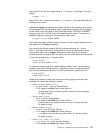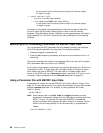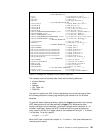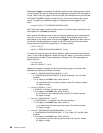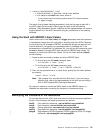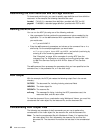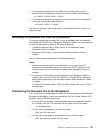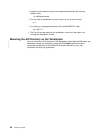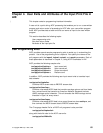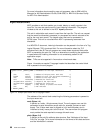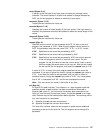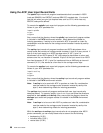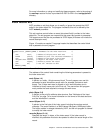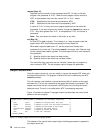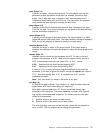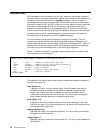
Chapter 4. User Exits and Attributes of the Input Print File in
AIX
| This chapter contains programming interface information.
A user exit is a point during ACIF processing that enables you to run a user-written
program and return control of processing to ACIF after your user-written program
ends. ACIF provides data at each exit that can serve as input to the user-written
program.
This section describes the following topics:
User programming exits
Non-zero return codes
Attributes of the input print file
User Programming Exits
ACIF provides several sample programming exits to assist you in customizing the
product. Use of the programming exits is optional. You specify the names of the
exit programs with the inpexit, indxexit, outexit, and resexit parameters. Each of
these parameters is described in Chapter 2, Using ACIF Parameters in AIX.
ACIF provides the following sample exits:
/usr/lpp/psf/acif/apkinp.c Input record exit
/usr/lpp/psf/acif/apkind.c Index record exit
/usr/lpp/psf/acif/apkout.c Output record exit
/usr/lpp/psf/acif/apkres.c Resource exit
In addition, ACIF provides the following user input record exits to translate input
data streams:
/usr/lpp/psf/acif/apka2e.c
Converts ASCII stream data to EBCDIC stream data.
/usr/lpp/psf/acif/asciinp.c
Converts unformatted ASCII data that contains carriage returns and form feeds
into a record format that contains an American National Standards Institute
(ANSI) carriage control character. This exit encodes the ANSI carriage control
character in byte 0 of every record.
/usr/lpp/psf/acif/asciinpe.c
Converts unformatted ASCII data into a record format as does asciinp.c, and
then converts the ASCII stream data to EBCDIC stream data.
The C language header file for all ACIF exit programs is also provided:
/usr/lpp/psf/acif/apkexits.h
along with the build rules for the ACIF user exits:
/usr/lpp/psf/acif/Makefile
Copyright IBM Corp. 1993, 1999 65



